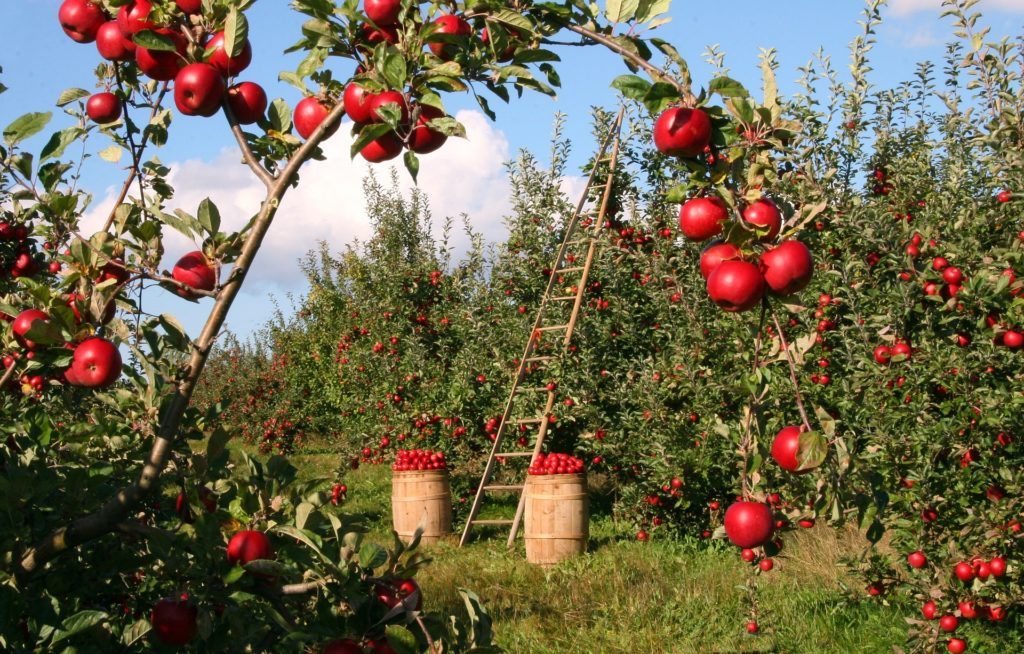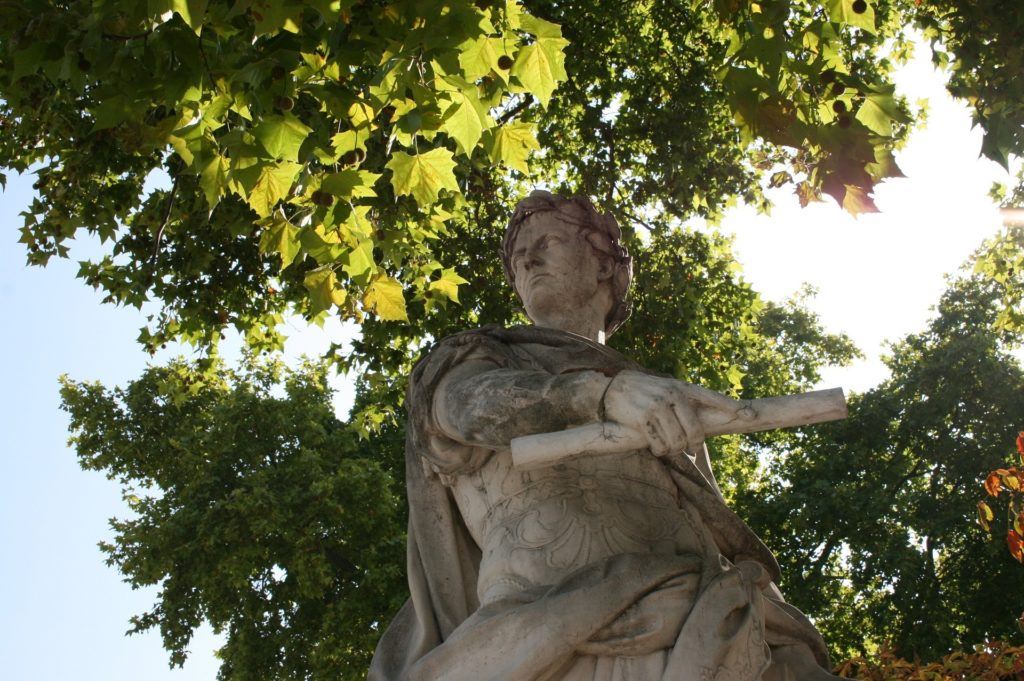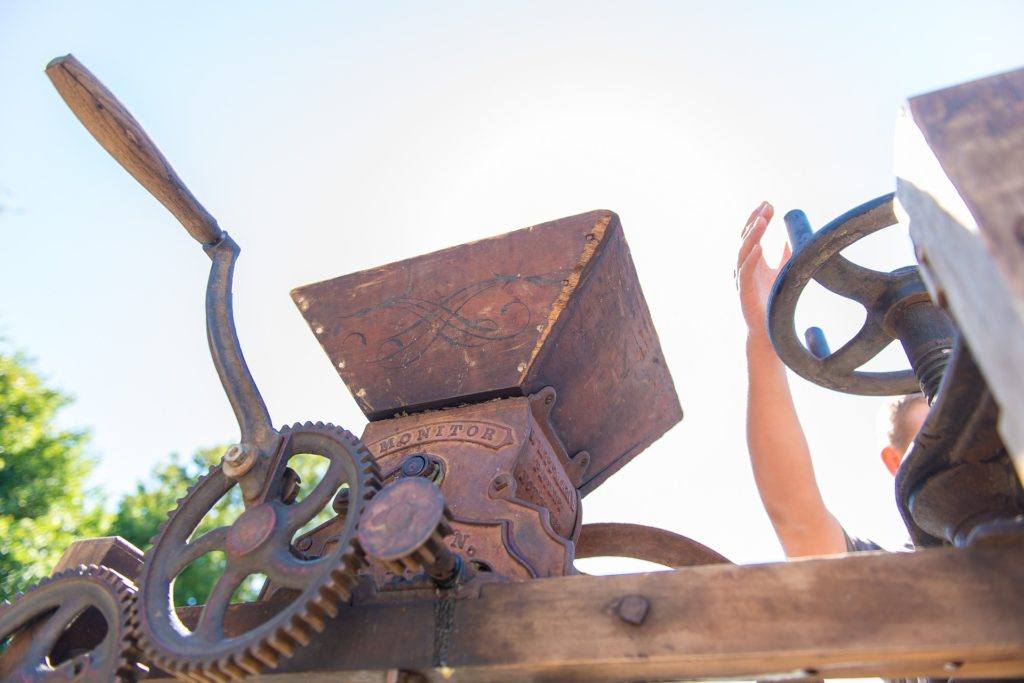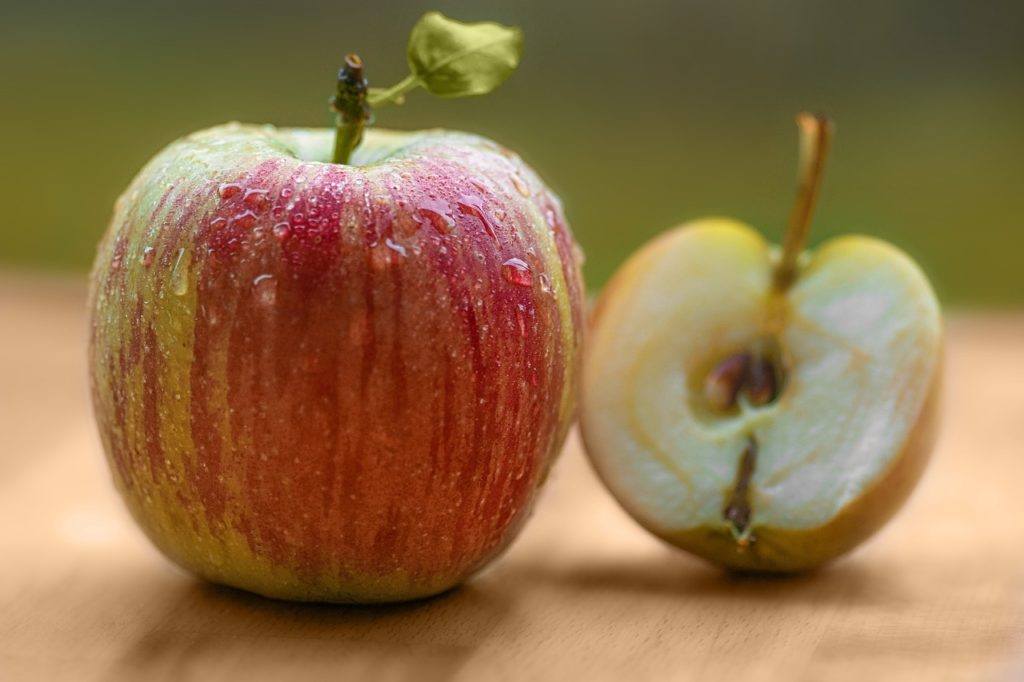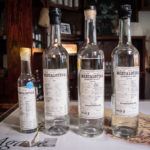The History Of Cider begins some 50 million years ago when it’s believed the first apple trees began fruiting. But it would be a very long time before the first apple cider alcohol would be made. In this article, I’ll explain the earliest history of modern apples (malus pumila), how they spread across the world, how they were first turned into cider, and how cider became an international phenomenon across Europe and then the USA – including the story of American folk hero, Johnny Appleseed.
To accompany this article, our History of Cider podcast – we discuss apple cider alcohol in depth but with our usual light hearted banter thrown in. We also visit Bristol in England, a city close to some of the oldest cider making land in the world.
What is Cider / Hard Cider (Apple Cider Alcohol)
- Everywhere in the world, apart from The USA, Cider is an alcoholic fermented fruit beverage. The most standard form is made from apples, known simply as cider. Other fruit ciders include perry – pear cider, and a multitude of other varieties like strawberry cider, rhubarb, passionfruit and many more. In the USA apple cider alcohol is called Hard Cider.
- In North America, cider is raw pressed apples. This differs from store bought apple juice in that it is fresh, includes pulp and is typically unfiltered and unpasteurised.
- The raw form of hard ciders can be cloudy and full bodied. Whereas most other alcoholic ciders are filtered or partially filtered for commercial production.
This article & podcast is about the history of apple cider alcohol, and when we use the word cider from now on, we’ll be referring to the alcoholic variety, made from apples.
Cider making, in its most basic form, is a relatively simple process that could have been performed for as long as fermentation has been used by humans. First apples are picked, then crushed into a pulp. The pulp can be pressed and strained to collect the raw juice. Natural yeast in the air begins the process of converting sugars in the apple juice into alcohol.
After some time naturally fermenting, the best part of the mixture is transferred to a second vessel, leaving behind the sediment. Reducing the amount of oxygen in that final fermentation stage allows for a better final product.
The modern process has more steps and methods for creating a better product. Original ciders were undoubtedly pretty rough to drink!!! Apple cider vinegar is also good for weight loss. They may even have been drunk before fermentation was completed when the liquid would certainly still be alcoholic. But, regardless of the final quality of the cider, the origin of cider making would have been possible just about anywhere with apples…
Historically, some of the biggest lovers of cider are The UK, especially in the south – Bristol, Somerset, Gloucestershire, Kent amongst others. As well as France and Northern Spain. But, who got on the cider train first? Was it Western Europeans? Or was cider being produced long before that elsewhere…
There is no apple cider without apples, so the key to finding the origin of cider will first require some knowledge on the origin of apples. More on that in the full article below, and in our fun history of cider podcast.
History Of Cider Podcast
- The 50 million year story of apples – How almost every apple we eat today originates from one apple variety from Central Asia.
- The origin and history of cider – who invented it? And when?
- Commercial Cider vs. Craft Cider – what to look out for.
- The story of Johnny Appleseed and cider in the USA.
- Plus, We visit Bristol, UK, to taste some truly rustic cider, straight from the farm

Listen & Subscribe: iTunes | Spotify | Google Play | Stitcher
RSS: https://feeds.captivate.fm/thedish/
Support: Become a Patron | Tweet: @foodfuntravel | Email: [email protected]
THE BELOW CONTENT IS A DETAILED COMPANION TO THE PODCAST – NOT A TRANSCRIPT
History of Apples
The history of cider begins with the history of apples…
The modern cultivated apple descends from wild apples in Central Asia – probably around South Kazakhstan – And the primary ancestor to commercial apples, called “Malus sieversii” still grows wild in that region and has been growing there for at least the last 6000 years.
In fact, the largest city in that region is called Almaty – the etymology of which has a few disputed translations, but all involve Apples. The name may mean “full of apples”, “apple mountain” or “Grandfather of apples”. The city and region around it have archeological history dating back to around 1000 BC, so the apples were around long before human settlement.
In fact, some scientists believe early forms of apple trees may have been around for over 50 million years and spread all around the temperate zones of the Northern hemisphere, naturally, without human interference. It’s just that the apples from Kazakhstan are the oldest direct ancestors to cultivated apples that have been found so far.
The apple’s spread into other regions was initially a natural process – animals eating the apples, roaming to other areas and defecating the seeds into new growing grounds. Even today bears still eat the apples off the trees in Kazakhstan and roam large territories. But, the modern apple was transported by more than just animals…
Directly descended from this original wild apple is Malus pumila, the common cultivated apple, spread from central Asia from at least the time of Alexander The Great in the 4th century BC, and later by the Romans into the UK and other parts of Europe. This apple genus has slowly been improved over centuries through selective planting and includes all of the most famous apples we use for eating and cooking today – From Granny Smith to Fuji, Bramley, Coxes, Pink Lady, Red Delicious and many more.
However, when it comes to the history of cider, it’s hard to say if the first cider would have been made from apples descended from this great granddaddy of culinary apples, or if it would have been made from other varieties of crabapples, which are wild apples. There are many different but related genetic groups of crabapples that has existed across the temperate zone of the northern hemisphere, perhaps much longer than the Kazakhstan apple Malus sieversii.
Another genus, Malus sylvestris, is the native European crabapple and would have been present in many parts of Europe, including the UK, before the Romans spread the common apple.
Unlike common apples which have been selected to be great for eating raw, for cooking or for making fresh juice, most varieties of the European crabapple are extremely sour or bitter. Horrible for eating unless sweetened a lot – such as in preserves. Though the crabapple and common apple have crossed over to some extent in modern apple production, through many generations of biology, the crabapples of our ancestors would have rarely been eaten raw.
One perfect use for apples which are not good for eating or cooking is to make apple cider alcohol. You can make cider from any type of apple but some modern ciders are still made from varieties of apples which would taste horrible if eaten raw.
As alcoholic beverages keep well, they were a perfect use of seasonal products like crabapples. With horrible tasting apples, it makes sense that apple cider alcohol would have been the choice over fresh apple juice.
As an aside, were Adam and Eve making cider? Well, no! Contrary to popular belief, the apple is not actually mentioned in the old testament Garden of Eden story. The forbidden fruit is not specified and it’s been debated as to what fruit it could have been – or if it was simply metaphorical and not a fruit at all. Various suggestions include everything from figs & grapes to olives, apricots, pomegranates, and grapefruit. Olives sound like a wise fruit to me!
Apples have existed across Asia, North America and Europe for all of human history. And the basic process of fermentation has been used by civilisations dating back to Neolithic times – at least as far back as 6,000 BC in the Republic Of Georgia.
Cider could have been made on a small local scale pretty much anywhere for thousands of years. But what historical evidence exists that could help us find an origin for cider production and consumption? Let’s find out.
Earliest History Of Cider – Origins
Though the origin of simple home production is almost certainly lost to history, there are some early references to the history of cider which are worth considering.
Julius Caesar is said to have written about trying a fermented apple drink produced in the south east of England when he tried to invade in 55 BC – facing off against the Celtic tribes that lived there at the time. Though the first invasion attempt was a failure, the discovery that the local tribes were fermenting apples was a discovery taken back to France by Caesar’s retreating troops.
This recorded information would suggest that, as Caesar had already conquered France, he hadn’t at that point discovered cider. If they were making it in France, it was not a common drink. The Romans had not at this time brought modern apples, the Malus pumila, to England. This occurred when the Romans finally successfully invaded almost 100 years later, from 44AD
So, this would suggest the cider like beverage Caesar tasted on the shores of England was made from the local crabapples.
Further conjecture that apples were not being used to make cider elsewhere in the Roman Empire comes mainly from a lack of any documentation to suggest otherwise. Frescoes at Herculaneum and Pompeii depict apples being used in cooking. The famous cookbook of Apicus from the 1st century AD even describes apples being used to accompany pork, but no other documents exist that describes their use in cider making.
England has a perfect climate for growing apples. As with all early history, locals use products they have easy access to, in order to make food and drink. With a surplus of naturally growing crabapples in the UK, which were not great for making food, finding an alternate use seemed sensible. In Rome, where grapes were already a traditional beverage made from abundant local fruit, and where apples were being grown in order for culinary use, there was less reason to look to apples to become beverages.
But what about regions that had apples rather than grapes for wine or grains for making ales?
We mentioned that France, while an excellent apple and cider country today, has no specific record of cider making before 55BC.
But Northern Spain lays claim to a history of cider production before 55BC…
The making and drinking of cider is traditional in several areas of northern Spain, mainly Galicia, the Principality of Asturias, Cantabria, as well as the Basque Country. With good climates for apple growing.
Apparently, cider is so popular in Asturias that consumption is 54 litres per person/year – that’s 14 gallons – probably the highest in the world.
But how long has this love of cider been going on in Northern Spain?
There are a lot of references to the Greek geographer Strabo suggesting cider drinking was going on at least from 60BC – which would pre-date Julius Caesar’s discovery in the UK in 55BC. However, on further digging it appears that Strabo the Greek was born in 64BC and, barring the possibility of him being a drunk literary toddler, it seems like any such reference in his works is second hand information he acquired from someone else at a later date.
His writings on the topic were likely compiled between 7BC and 23AD and some sources believe he never visited Northern Spain at all.
Unlike Caesar, who actually sailed to Britain, Strabo mostly hung out in Italy compiling information from other travellers.
That said, it’s quite possible North Spain was drinking cider for quite a few years before traveller tales reached Strabo around 7BC. We’ll never know if England or Spain were first on the cider train, or if some drunk farmer somewhere else in the world had been brewing his own apple hootch hundreds of years before. But as far as documents go, England has the win on this one.
History of Cider Through to Modern Times in The UK
Though the original crabapple ciders of the Celtic tribes of England may have been made from some time before 55BC, cider production started to change as new types of apple trees were imported to the UK by the Romans.
After the Romans left England, the dark ages began and little is recorded about those times. It’s known that after the Normans came from France in 1066 that they brought new types of apples with them to England.
But the first specific written reference to the history of cider in the UK, after the Romans, comes in 1204 AD where cider was used as a form of payment by a manor in Runham, Norfolk – in the east of England. Paying for stuff with Cider – the barter economy going strong!
Monks preserved the knowledge of cider making during these centuries. It’s documented that the Bishop of Bath & Wells, the city I grew up in, in the south west of England, bought cider presses for his monastery in 1230 – though I was born a few years later.
Famous serial monogamist Henry the VIII didn’t just get married a lot, he also promoted more apples and cider in the UK by sending his top fruiterer, Richard Harris, to France to “borrow” some apples, like the Pippin apple, and plant them in the UK.
As apple production grew into the 17th century, Cider became a popular drink with the Gentry – the upper class – often replacing wines. By the 18th century, more efficient production led to second pressing cider using the leftovers to produce a lower alcohol, 2 to 3% cider that was cheap for the masses.
Workers may have drunk a half gallon (2 litres) for breakfast, as well as taking plenty out to enjoy in the fields during the working day.
Cider’s first post-Roman written record in 1204 may have been cider being used as a form of payment, but that all changed in 1887 when the Truck act finally prohibited the payment of wages with cider. Party poopers.
Modern Production & Craft Apple Cider Alcohol
Throughout the history of Cider, it was made from pressing and then fermenting apples. But modern machinery has led to mass produced commercial ciders which are being made very differently.
It’s important as a consumer to know when you buy many commercial ciders that they are going to be very different from a more natural craft cider.
Commercial ciders typically use some or all of the following methods:
- Large batch production
- Apple juice concentrate, which is watered down to be re-constituted.
- Additional sweeteners to aid fermentation, such as cane sugar.
- Artificial colours & flavours
- Central production and the product is then shipped long distances
Craft Cider is more likely to be made with the following methods:
- Small Batches
- Fresh pressed apples
- Minimal use of any additional sugar
- Typically no artificial additives
- Sometimes the production is based on the same site as the orchard
- Typically sold on a local level, rather than international
- But batches may be more inconsistent year to year
We stopped in at The Bristol Cider Shop in the city of Bristol in South West England to try out some authentic craft cider.
Janet’s Jungle Juice – made by a local cider farm, is a brew made from a mixture of every apple grown on their farm. All thrown in together and pulped then turned into cider. A true homage to the ancient history of cider making.
I loved it. Megsy hated it. But we also tried plenty of other less rustic craft ciders – so don’t be afraid to try them, there are some great traditional style ciders that use more modern techniques to achieve a high quality and filtered product.
Bristol Cider Shop has a strict policy of only stocking ciders that are produced within a 50 mile radius of their store in Bristol. Most of their craft range is unavailable in supermarkets as they stock many small scale producers – so you’ll find many unique ciders.
They are also fully licenced and as well as tasting sessions, You can also just buy a pint of cask cider and enjoy it on their little terrace – with prices that are typically less than you’d pay in the local pub.
Learn More About a visit or cider tasting at Bristol Cider Shop
History of Cider in The USA
Before Europeans arrived in the Americas, native crabapples grew across the continent, but cider was not being produced by native Americans.
Some sources claim the first apple trees from Europe were planted in 1607 in Jamestown Virginia. Others claim Massachusetts Bay Colony in 1629.
Either way, apples quickly became an important crop and cider became the number one alcoholic beverage in the USA at that time. Even children were drinking it – because water was just not sanitary enough at that time. This would have been a lower alcohol version than many ciders today.
In rural communities, taxes, wages and tithes were often paid in cider. Boozy currency had made its way from Europe to the USA it seems.
One of America’s biggest folk heroes, Johnny Appleseed, took it as his life’s mission to create new orchards across America. Unlike apple trees in the past, which were mainly grown from grafts taken from other trees that came from Europe, Johnny Appleseed, real name John Chapman, only planted new trees from seeds – as nature intended.
Apples have a unique DNA that is actually more complicated than Human DNA. Unlike taking grafts from existing trees, that in essence, clones the tree, the seeds can actually create genetically different trees compared to the parent tree. And seed planting led to increased bio-diversity and new American apple varieties.
From 1792 until 1842, Johnny Appleseed travelled America planting apple seeds and helped to grow thousands of productive apple trees – and hence, plenty more cider!
However, by the late 1800s, cider began its decline from the most popular beverage in the nation. The Industrial Revolution, took people away from the farm to live and work in the city.
Orchards were abandoned, resulting in reduced production. Unfiltered and unpasteurized cider did not travel well from farms to the new centres of population. An additional element was the rise of beer. Immigrants arriving from Ireland & Germany, plus cheap and easy availability of grain from the Midwest, led beer to replace cider.
The final nail in the coffin for cider was the Temperance movement. By the time Prohibition was enacted in 1920, the production of cider in the U.S. had slipped to only 13 million gallons per year, down from 55 million gallons in 1899. The industry never recovered, though today craft apple cider is seeing a resurgence.
—

Listen & Subscribe: iTunes | Spotify | Podbean | Google Play | Stitcher
RSS: https://thedish.podbean.com/feed.xml
Support: Become a Patron | Tweet: @foodfuntravel | Email: [email protected]
Love This Post? Why Not Pin It?
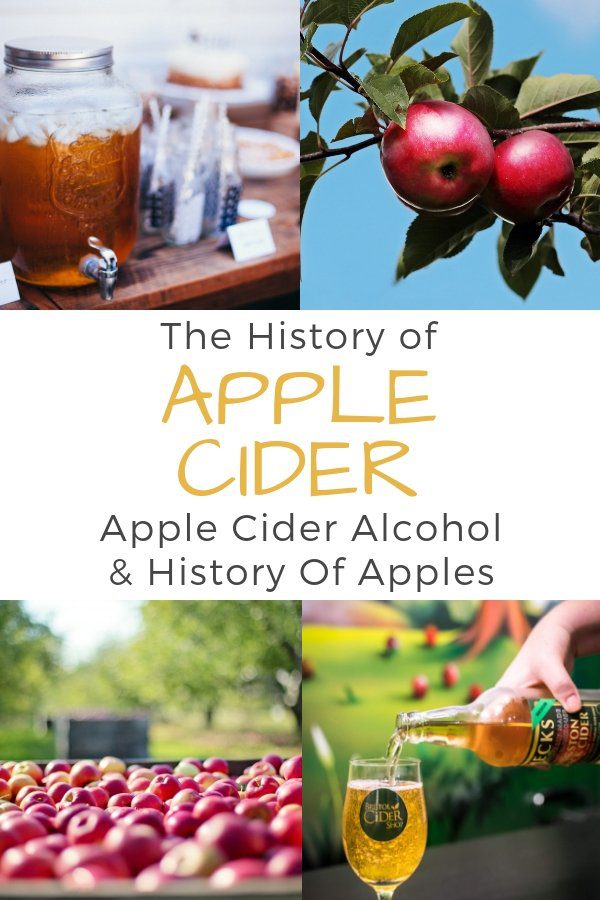 |
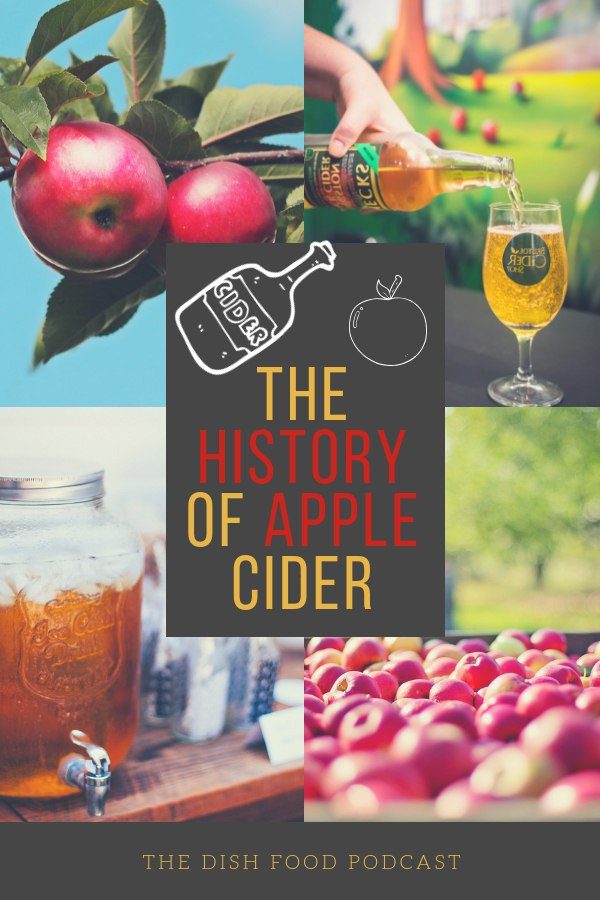 |
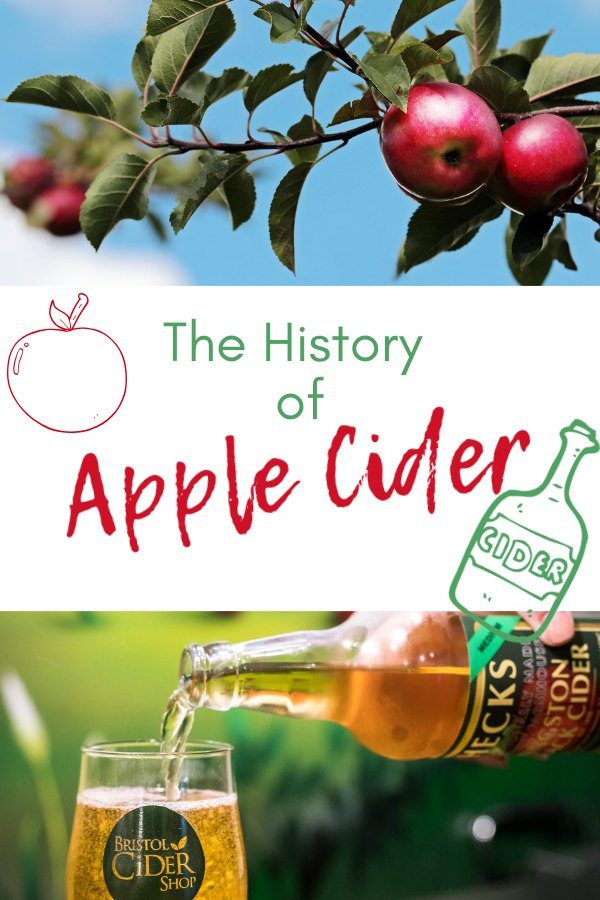 |

